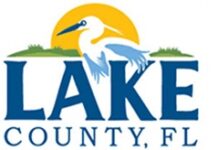
(All images taken by Harry Coverston)
BY HARRY COVERSTON, GUEST WRITER TO THE TIMES
SELMA, AL. – I have visited Selma twice in the past five years. The first was five years ago at the end of my trip to Montgomery to represent two 1950s lynching victims from Orange County who were memorialized at the Equal Justice Initiative Memorial for Peace and Justice. The second visit came last April during the Civil Rights Pilgrimage made with members of the local Peace and Justice Initiative.
In all honesty, I pray I will not need to make another trip to Selma. The museum in Selma with its display of the weapons used on peaceful marchers on Bloody Sunday in 1965 overwhelmed me on my first visit. It was the baseball bat wrapped in barbed wire that made me so nauseous I ran from the room fearing I would throw up.
On my recent visit to Selma, I accompanied a group of PJI pilgrims on a walk across the Pettus Bridge where Bloody Sunday occurred. Once again, my soul was incredibly uneasy in this place. I had wondered whether the ghosts of Selma had been laid to rest along with its deadly history. But my question was answered when a passing pickup truck full of young white men slowed down long enough for the passenger to lean out his window and shout “Sieg Heil!” while giving the Nazi salute.
Whatever veneer of peace there might be in this small town with its troubled history, it’s very fragile. The ghosts of the Selma – who beat protesters with abandon and shot Viola Luzzo to death as she returned from Montgomery to Selma with a fellow organizer – are alive and well.
While I hope I never have reason to return to Selma, I am grateful for two lessons I learned there. The first is that there are many ways to resist oppression. One of the most powerful is art.
The Brown Chapel AME Church on the north side of town is today a pilgrimage site. This is where the marches to Montgomery, including the one which ended in the Bloody Sunday police riot, originated. There Martin Luther King, Jr. would come to lead the second march which would successfully make the 50 mile walk to Alabama’s capitol on foot.
A block east of the church today is a school with a large playground now called Foot Soldiers Park and Education Center. The community has created a number of powerful murals there that speak to issues of justice raised by marchers in 1965 which continue to be litigated in an America reluctant to deal with its original sin of racism.
Like all art, these murals speak to the viewer at a number of levels. There is the immediate message processed by the head and the emotions triggered by the heart. But there is another level, rarely conscious to the viewer, where art speaks to the soul. And it is from such moments of inspiration – literally the spirit entering in – that great moments of justice making flow. There is a reason the first thing oppressive regimes do is suppress their artists.
It is hardly an accident that the images of the Foot Soldiers Park speak to being heard and to voting. For that is the second way and perhaps the more powerful means of resisting oppression. Our national elections are now days away. The question in many minds is whether the people most in need of being heard will vote. At a very basic level, it’s a question of whether the ghosts of Selma will have the final say.








